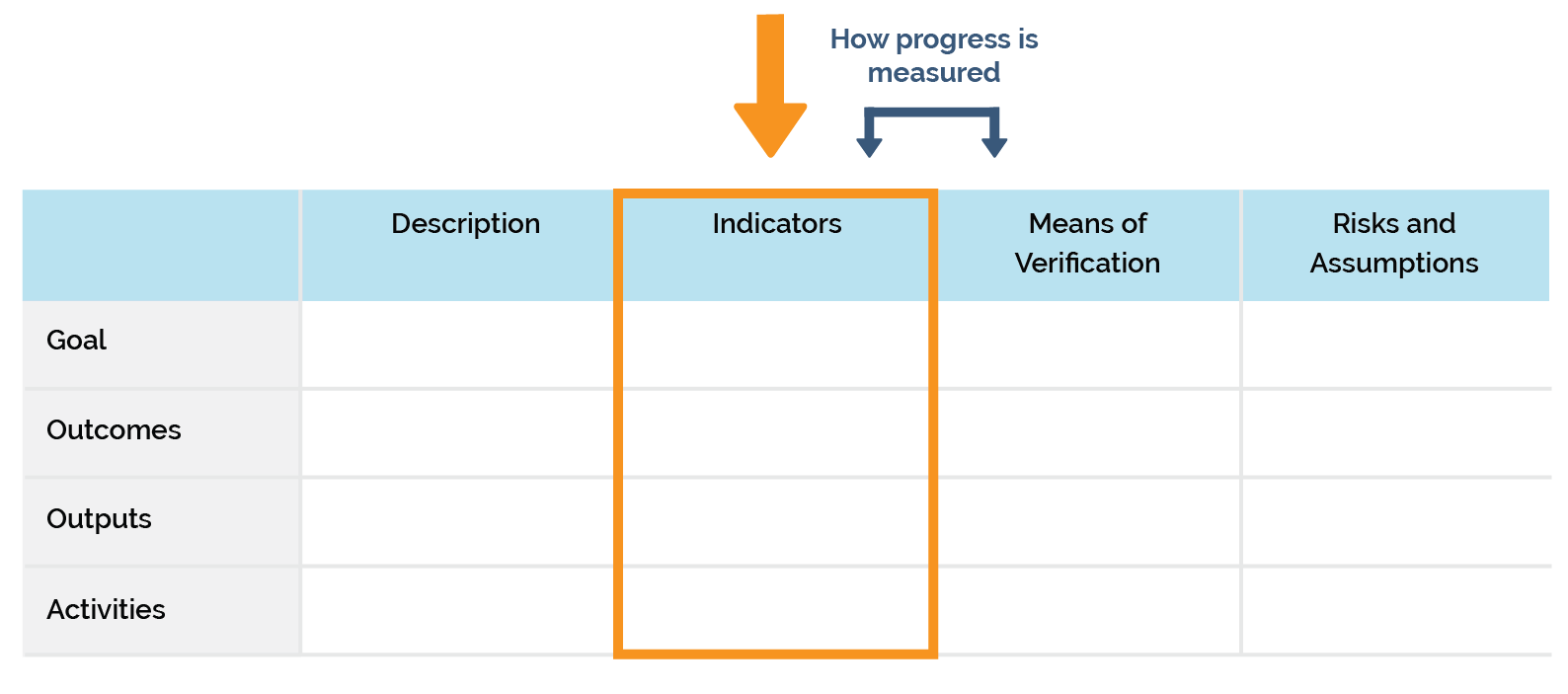The next two sections will review indicators and means of verification. Strong indicators will provide quantitative and qualitative measurements on the project’s process and impact. Means of verification refers to how you will find the data that corresponds to the indicator.
What are indicators?
Indicators are qualitative or quantitative measurements of types and processes of change. In PVE projects where change is complex, and involves attitudes, behaviors and relationships, it is important to set and track qualitative change.
Why use them?
Indicators are useful to tell us what type of data to collect, and will give us information on when, how and with what methods this data should be collected. However, only when the data is analyzed will we understand the change that has occurred. Proper analysis implies triangulating data, that is cross-verifying data from at least two other sources and applying a combination of methods, such as testing a quantitative trend with data collected through focus group discussions and key informant reviews.
*Definitions above from UNDP/International Alert
Quantitative versus Qualitative Indicators
This resource from the United States Institute of Peace identifies a few key areas that P/CVE projects should measure changes in: attitudes, behaviors, and relationships.
| Attitudes |
Can measure:
Commonly assessed by:
Weakness:
|
| Behaviors and Activities |
Can measure:
Commonly assessed by:
|
| Relationships and Social Networks |
Can measure:
Commonly assessed by:
Weakness:
|
This resource from the United States Institute of Peace identifies a few key areas that P/CVE projects should measure changes in: attitudes, behaviors, and relationships.
There are two main types of indicators: context monitoring indicators which help measure key changes in the project environment (including things which may be out of your control); and performance monitoring indicators which help measure progress toward achievement of the intended outputs and/or outcomes of the project. Below are examples of both types of indicators:
| Context Monitoring Indicators |
Monitor key changes in the context in which a project is operating. These changes could relate to PVE dynamics which could impact the project’s performance or represent new opportunities. Example:
|
| Performance Monitoring Indicators |
Measure a project’s performance against stated aims and targets at the output, outcome and ultimately at the impact level. Examples:
|
*Most of the indicators examples above are from the CT Bureau. For additional examples of indicators, see this Indicator Bank from International Alert/UNDP, and CVE Illustrative Indicators Exemplar from the CT Bureau.


